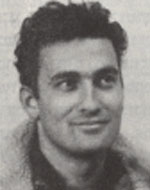Eitan, Hanan
Hanan, son of Rita and Abraham, was born on October 17, 1944, in Maoz Haim, in the Beit Shean Valley. Hanan grew up with the children of the kibbutz, Hanan was drafted into the IDF in mid-August 1963 and joined the air force without hesitation. The summons notice for the flight course arrived late and he had to hurry up and complete the delay. However, at the beginning of the course he contracted typhoid fever. It was only with his strong will and great energy that he managed to overcome the obstacles and was finally certified as a flying bird. For ten years Hanan served in the Air Force, worked as a pilot in the flight school and as a pilot. During the Six Day War, Hanan served as a helicopter pilot in Sinai and the Golan Heights. After the battles he was awarded a citation for rescuing a pilot in dangerous circumstances. “Hanan could not think of abandoning a member of the field, he pretended not to hear and continued to carry out the mission as we had planned,” says his friend, Oded. “When we returned to the base, it turned out that a lot of damage had been done in the stomach of the plane, and the rear drive was completely broken, one of the landing lights and all the antennae in the ventricle were torn, and a huge hole opened up from a rock that apparently sat on it.” Hanan knew about the damage caused during the rescue operation, but he steadfastly and devotedly committed himself to the success of human life. During the War of Attrition he worked as a Skyhawk pilot and at that time decided to start a family. In late March 1968 he married his girlfriend Tzipi. The couple lived in Mishmar Ha’emek and had a son and a daughter – Gonen and Efrat. Even during his years in the air force, Hanan found time to work in the agriculture, but when the kibbutz members rejected his request to continue his service in the Israel Defense Forces, he accepted the verdict and with a heavy Lev left his favorite corps. “I will continue to fight, this is certainly not a final decision, I think and feel that I must be in the army as long as I can contribute to it.” After being released from the service, Hanan worked in the fodder industry, worked in photography and lovingly guided his children. On Thursday, October 4, 1973, he celebrated his 29th birthday with his family. On the eve of Yom Kippur, Chanan was in the open field, on the tractor, ready to endFodder for cowshed. He knew very well about the tension and alertness, but waited for the order. At dawn they came to call him. He changed his uniform and went out to one of the air force bases. Given the signal, he left in a quartet of aircraft to the north front. Hanan was killed on October 6, 1973, when his plane exploded in the air near the Elrom-Quneitra junction when a Syrian anti-aircraft missile hit his armed plane. He left behind a wife, son, daughter, parents and two sisters.
